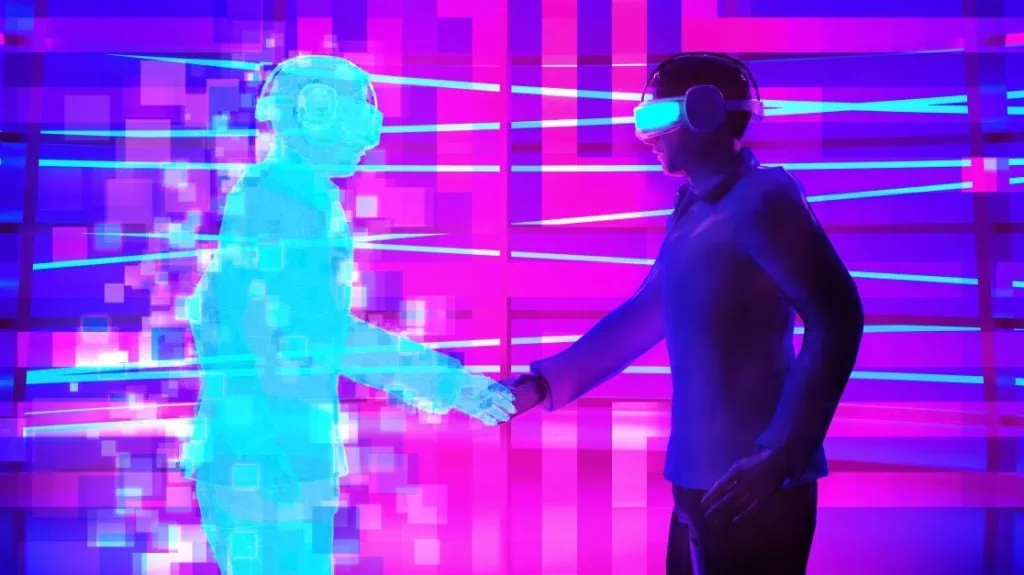There is no second-guessing the inevitability of metaverse. It is no more a techie’s fantasy but a technological marvel towards which we glide steadily. And thanks to the relentless ambition of the big techs, it seems well within sight.
A lot has been said about metaverse but rarely about what the very fabric of this digital world is made with.
In this article, we explore the primary building blocks, i.e., technologies that make metaverse an imminent phenomenon.
To put it in perspective, here is an analogy between the universe and the metaverse. Our universe is a perfect synergy of various elements, such as hydrogen, carbon, oxygen, and so on. Without one, the other cannot create life. Likewise, metaverse will be a construct of many technologies working together. Their coming together in perfect harmony is when we can expect a livable metaverse.
And each tech has an independent role in its making. But it is the seamless interoperability that will make this digital ecosystem flourish. For instance, without superfast internet, VR devices won’t be able to work at their full capacity. Do you see this interplay of technologies? It is essential to the mature metaverse that we picture.
Now since we’ve let the cat out of the bag, here are all the technologies that should enable a full-blown metaverse.
1. VR, AR, MR, and XR
VR and AR are the cornerstone tech upon which lays the foundation of metaverse. And although both are different, they are mutually inclusive.
How are they different? AR superimposes 3D images or text over the physical reality around us. Whereas VR is very brick-and-mortar to the metaverse. Without it, there is no such world.
But Augmented Reality and Virtual Reality can work together to create a more realistic VR experience. By overlaying superimposed 3D information, AR amplifies realism in the spatial 3D environment.
When merged, VR and AR give us a hybrid- MR or Mixed Reality. Unlike AR, we can interact with 3D information superimposed on the physical world with MR, blurring the lines between the real and the virtual.
But when you combine the three, we get XR or extended reality. This is where things get interesting with unfathomable possibilities. XR makes us rethink our definition of metaverse. So far, we imagine metaverse to be an immersive 3D world that sucks us in. But with XR in the mix, it seems this is going to evolve into something more surreal. Our real world, infused with the metaverse!
Read our metaverse guide: https://www.vrdirect.com/blog/metaverse-update/metaverse-guide-for-businesses-with-virtual-reality-into-the-digital-future/
2. Artificial Intelligence
Artificial intelligence is one of the key technologies that will shape the metaverse. From helping navigate the new world, to improving it, it has many roles to play in metaverse. AI can compute terabytes of data at a lightning speed within fractions of seconds and work tirelessly, round the clock. This is what makes AI so indispensable to the metaverse. And when supercharged with machine learning, AI becomes even more pivotal. It can help assess data generated from user-metaverse interaction to help chart a more precise roadmap for improving the virtual platform. The use cases of AI in the alternate realm are several. From chatbots to processing data, automation to data mapping, it has so much to offer.

3. Internet of Things
As we know that data is at the core of every tech, metaverse needs it more than any tech we know. It is the fuel it needs. And as we know, metaverse should be able to receive data from the real world and infuse it into the virtual world, seamlessly. More so, without adulteration, manipulation, and fast.
This is where IoT comes into play. IoT takes all the things in the world and connects them to the internet. The tech is vital to forging a connection between the flexible virtual and adamant physical world. It ensures a widely accessible Metaverse that is in sync with the movement of the real world.
IoT has been around for quite a while now. And as of today, millions of connected devices lay scattered across the globe. These devices are great for feeding Metaverse with massive amounts of real-time data. And another, one of the most common use cases of IoT in Metaverse would be creating a Digital twin or avatar. It can help create precise replicas of our offline personality; physical and biological.
So,
- Data mapping
- Creating digital twins
- Connecting real with virtual…
…are some primary use cases of IoT in the metaverse.
4. Blockchain
While most are hyper-excited about the metaverse, many still have their reservation. Especially, the uncertainty. Will the corporations hijack the metaverse, or will the governments run it? A predisposed sense of being is not something we would barter for reality. Right?
So, for people to indulge in a virtual environment in its entirety, we need to establish trust. This could happen only if the user is free to make his/her decisions and owns assets/data. Moreover, the virtual world should not be a hunting ground for hackers. Also, it must have a fully functioning economy with regulated currency and assets.
Thus, the Blockchain. In simple words, it is an unbreachable, immutable system that allows recording info with no way (at least so far) of cheating it. Apart from protecting the user from data breaches, Blockchain allows a decentralized infra. It makes sense to trust our alter egos, our avatars, with all the vulnerabilities, and privacy, while being the only one with the key to the safe where they are stored.
We regularly post the latest updates about metaverse:
5. Web 3.0
Also known as Next-Gen Internet Technology, web 3.0 has many use cases in metaverse. But the most significant one is challenging the corporate monopoly over internet ownership. By now one thing is sure; corporations are not the best custodians of our data. With the recent surge in data manipulation and breaches, we simply cannot trust them with it. And as a matter of fact, the current web 2.0 is, by nature, designed to park all our data with the corporations.
So far, so good. But what happens when the internet is no more a technology, but an extension of our lives? The metaverse is just that. Isn’t it? So really it is a matter of choice. Whether we want a metaverse powered by a controlled web infrastructure? Or a free decentralized web, where the user owns every bit of the data and digital assets.
Besides, Web 3.0 offers much faster data processing, low latency, and is cost-effective.
Enter the metaverse with us: https://www.vrdirect.com/lp/your-start-into-the-metaverse/

6. Realistic 3D modeling
3D modeling is not new. It has been around for quite a while and has contributed greatly to various sectors. But mostly Entertainment, especially gaming and films. It was during the pandemic that other sectors started deploying it. With movement restrained, companies had to adapt. And so, they used 3D VR simulations to surmount the challenging times. The real estate players began promoting virtual property tours and although these are somewhat immersive, they lack the infrastructure and the realism. Nonetheless, it is interesting and novel.
But when you talk about the metaverse, ‘somewhat’ doesn’t cut it. The metaverse must be a finely detailed virtual construct. It needs a breathtakingly realistic 3D construction that replicates the real world.
Whereas the current tech is great for churning realistic VR simulations but needs expert skills and tedious hours to create the content. metaverse as we see it, will be a world created by people, content creators, companies and so on. So, what essentially is needed is a powerful tech that can create hyper-realistic 3D content in a matter of minutes (if not seconds).
Though it may not be pro-artists and their kin, AI-based art generators may be a glimpse of what will work. For Metaverse content creators, a more metaverse-ready version of such tech’s can be a perfect way to churn metaverse content such as NFT’S on the go.
But anyway...
… at the rate these technologies are developing, we may soon be the first of the “Metazens”. A group capable of pulling objects out of the air, free of time and space constraints. Everything that is considered impossible today will likely be normal in the Metaverse.
Schedule a free demo now to learn how they can use VR to bring your business into the Metaverse:





